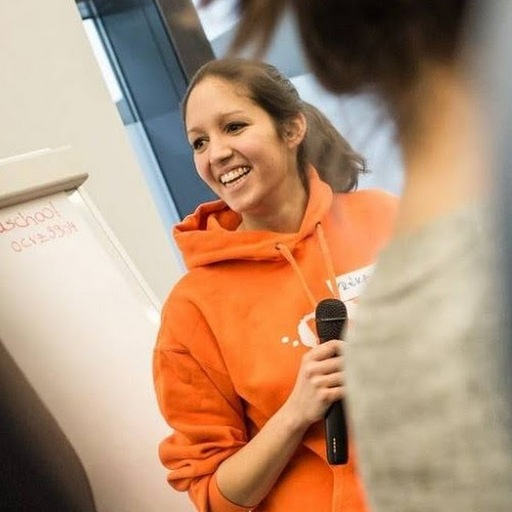Demystifying Product Discovery - Part1: Uncovering Opportunities
One of the biggest challenges in product is finding something worth putting effort into. In this 3-part series we showcase our product discovery practices as a software agency. We immerse ourselves in the problem space of remote work and go until idea validation. You can gain firsthand insights of our approach - that is not really by the book-, learnings, and expert tips for successful workshops and team involvement.
In part 1, we deep dive into how our initial discovery phase looked like and why even you should consider dedicating time to this. At the end, we get to validated problem statements. Are you ready?
Why we - and you should - do discovery?
When you are building a new product, the journey from the first idea to the actual building phase can seem endlessly long and equally risky. The big challenge is finding something worth putting effort into, and that’s where discovery comes in. That is why you should do it.
As a software agency, we face situations where discovery is necessary, such as when our clients bring early-stage product ideas, MVPs, or when we build internal products. Discovery helps us find red flags as early as possible and avoid building something that’s unusable, nobody really wants or has significant feasibility issues.
My goal with this article is to shed some light on the topic of discovery by presenting one of our real-life examples. We’ll show you how we have recently did discovery around an internal product initiative - making remote work more enjoyable - , and what the outcomes, learnings, and tips are for you if you’re starting a new business or doing some discovery work within your project.
Our challenge
At Apex we are working on internal product ideas (Let’s call them #p23 from now on). The main criteria for #p23 are:
- learning exciting new tech or product areas
- being a place where we recharge while creating something valuable
- to have a mission Apex people can easily connect with - to make remote work (even more) enjoyable!
That is where our discovery process began. False! This is already a refined version of our starting point. It cost us some iterations to figure out what we really want from a #p23.
How to structure your process?
First things first, don’t reverse engineer the process, and come up with an idea and then find a problem that it might solve, however tempting it may seem. Start by understanding whether it’s about your existing product or a new problem space.
The process starts with defining the problem space, which in our case was remote work. Sounds a bit vague, isn’t it? Let’s put a bit more structure to it. This is how we did it:
Research question
With a team of two product persons, we came up with the research question that drives our whole discovery process. This is the north star of the project, which shows us the direction whenever we would deviate too much from the topic. Write it in CAPITALS on your Miro (or whatever collaboration tool you use.)
Our research question - simply put: the thing that you want to have answer for at the end of the process - was “What makes remote work not enjoyable?”
Research plan
Having the goal set, we came up with a strategy on how to gather insights for this question - let’s call it the research plan.
Knowing that the scope we want to cover is fairly big, we came up with a plan that leaves room for iteration. We aimed to do the following:
- Desk research: From studies, reports, to sub-reddits, communities & product hunt launches you can think about lot of different resources that can help you build up a solid knowledge-base around the topic. The key is about how to structure and synchronize them effectively. We will get back to this challenge a bit later…
- Interviews: at least 3-4 interviews / main persona assumptions and industry experts
- Field studies: immerse ourselves in the life of remote workers (that is quite easy, tho)
- Synthesise learnings, decide on directions, cut scope during the process
- Next steps are pretty much depending on outcomes: whether it’s more interviews, or we should use other discovery methods , or move on to idea validation
Learning n1: “You need to trust your instincts when dealing with vague problem spaces like ours. While data may not cover every aspect, your gut feeling can guide important decisions. Don’t worry, these still can be validated along the way.”
Learning n2: “Streamline and consolidate key insights after each research session, whether it’s an interview or desktop research. Decide on an efficient method beforehand to gather and organize these insights. We highly recommend utilizing tools like Miro for its user-friendly interface.”
Learning n3: “Be mindful of confirmation bias. Having multiple team members can help mitigate this risk by introducing diverse perspectives and challenging assumptions.”
Initial discovery
We believe there is a sweet spot between planning and taking action. Our approach is to plan with a basic structure, keeping in mind the main goal, but being open to change directions and methods as required. So we are agile. Especially, if the scope is this big.
First insights
In the divergent phase, we aimed to gather as many insights as we could connected to our research question. We interviewed different persona types: remote and hybrid working employees and employers, digital nomads, freelancers, home-based workers.
Overall, we talked with 12 people and refined our personas into three groups: remote employees, remote employers, and digital nomads. We did field research, not just asked but observed remote workers - I myself for example did the research while I was in Morocco sharing live- and workspace with 20 more remote workers 🏄.
We also did desktop research in parallel and extracted main insights from studies about remote work challenges. We looked at interesting solution spaces, from shared co-workings to async communication promoter to onboarding supporter apps. We infused this knowledge into our interview questions so it never stayed the same.
Learning n4: “Embrace the balance of divergent and convergent thinking. While the initial stage may involve exploring diverse ideas, it’s crucial to incorporate convergent, idea-selecting approaches to progress effectively in your research.”
Moving on with the research
After completing interviews with 12 individuals, we observed recurring patterns, indicating the need to transition from insight generation to the ideation phase. However, before delving into ideation, it was crucial for us to establish a shared understanding of the challenges at hand. To accomplish this, we conducted a two-person workshop where we synthesized our insights in a structured manner, serving as a foundation for our subsequent solution-ideation workshop.

During the workshop:
- We revisited our comprehensive Miro space to review the insights gathered
- Individually, we then generated problem statements using a pre-established format to ensure comparability
- We pitched our problem statements to each other and assessed them based on three factors: Apex fit (the likelihood of solving the problem with digital products), Excitement (personal enthusiasm for the problem), and Importance (the significance of the topic and demand for solutions).
Through this exercise, we narrowed down our selection to 7 problem statements:

Learning n5: “Allocate dedicated blocks of focused time to conduct research within a reasonable timeframe. Procrastination and prolonging the process will make it increasingly challenging to regain context and effectively continue with the research.”
Stay tuned for the 2nd part where I share how we turned these problem statements into opportunities to boost ideation and prepared for workshops, involve team, along with templates!

Are you interested in working with us?


